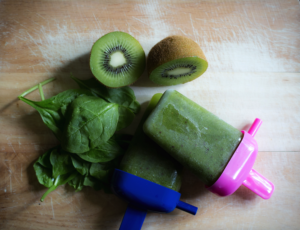Healthier Chocolate Nut Spread
/You asked for a healthier alternative to the famous (and delicious) chocolate hazelnut spread (you know which one). Today I'm sharing not just one, but 4 alternatives. All are much lower in sugar and have no palm oil. Just in time for back-to-school. I mention back-to-school because you'll not only be looking for packed lunch ideas, but also breakfast ideas for rushed mornings and quick after school snack ideas.
All of these contain nuts or seeds. That's the foundation of this foodstuff afterall. Some preschools and schools are nut and seed-free, some are nut-free (i.e. seeds are okay), and some are peanut-free (i.e. nuts and seeds are okay). Always check with your individual facility to find out exactly what is and what isn't allowed.
An important note, especially if you are introducing these to picky eaters who already are familiar with the famous chocolate hazelnut spread, none of these taste exactly the same. So, don't try to pull a fast one on your little one and swap one for the other. They'll notice the difference - kids have keen observation skills with their food. Call this spread by a different name. This way they will be expecting something different.
A huge THANK YOU to student volunteer Carla for her help with these recipes!
Enjoy!
Healthy Nut-Free Chocolate Spread
Ingredients:
- 2 cups toasted sunflower seeds
- ½ cup cocoa powder
- 4 tbsp icing sugar
- 1/2 cup milk (optional)
- ¼ to ½ cup canola oil
Directions:
- In a pan over medium-high heat, toast the sunflower seeds until light brown and fragrant, about 3-4 minutes. Set aside to cool.
- Using a food processor, process the sunflower seeds until powdery. Scrape the sides.
- Add the cocoa powder, icing sugar, milk (optional), and canola oil. Blend until smooth.
Homemade Chocolate Hazelnut Spread
Ingredients:
- 2 cups hazelnuts
- 3 tbsp icing sugar
- ½ cup milk (optional)
- ½ cup cocoa powder
- ¼ to ½ cup canola oil
Directions:
- In a pan over medium-high heat, toast the whole hazelnuts with their peels on for 5 minutes. Set aside to cool.
- Once the whole hazelnuts are cool, rub them in between a kitchen towel to loosen and remove the skin.
Habibi's Chocolate Tahini and Powerplant's Chocolate Sprouted Seed Spread
(Note: In the spirit of being fully transparent, both of these were given to me for free. I did not receive payment to review either. I'm super picky about what foods I'll share with you in my reviews.)
I brought both of these to my co-working space last week so that everyone could try them. Yes, there are perks to having dietitians as friends and co-workers! Both received very positive reviews. Some people preferred one and an equal number preferred the other. Both products have a short ingredient list with only recognizable foods. They're made with nuts or seeds, providing healthy fats (and no palm oil). Each has just a touch of sugar/sweetener. Check each product's websites for a listing of what stores you can find them in.
Powerplant's spread has an intense chocolate taste for you dark chocolate lovers. It has a chunkier texture but smooth mouthfeel. So it's perfect for spreading on a cracker but not on soft bread. It totally screams to be included in your next smoothie.
Habibi's Chocolate Tahini has a milder chocolate taste. A few people found the tahini and chocolate flavours fought eath other. Most of us thought it was delicious (me included). This spread is the more classically kid-friendly of the two.
Looking for more healthy, kid-friendly recipes? Check out my recipe page.





 Rarely do I give a workshop on introducing solid foods to babies or feeding toddlers and preschoolers (including picky eaters) where a parent doesn’t ask how much food they should feed their child. It’s quite an easy question for me to answer. And, the answer applies to any meal or snack for a child of any age:
Rarely do I give a workshop on introducing solid foods to babies or feeding toddlers and preschoolers (including picky eaters) where a parent doesn’t ask how much food they should feed their child. It’s quite an easy question for me to answer. And, the answer applies to any meal or snack for a child of any age:





















